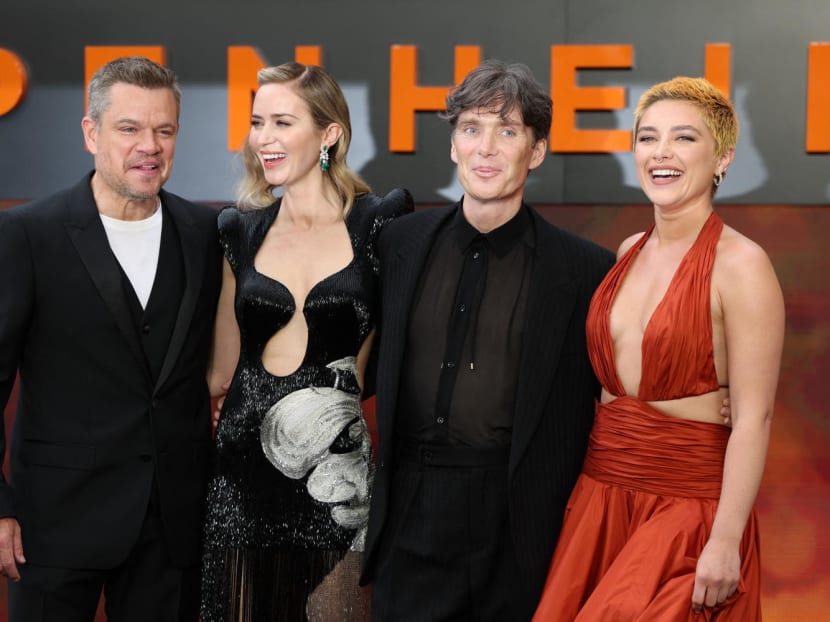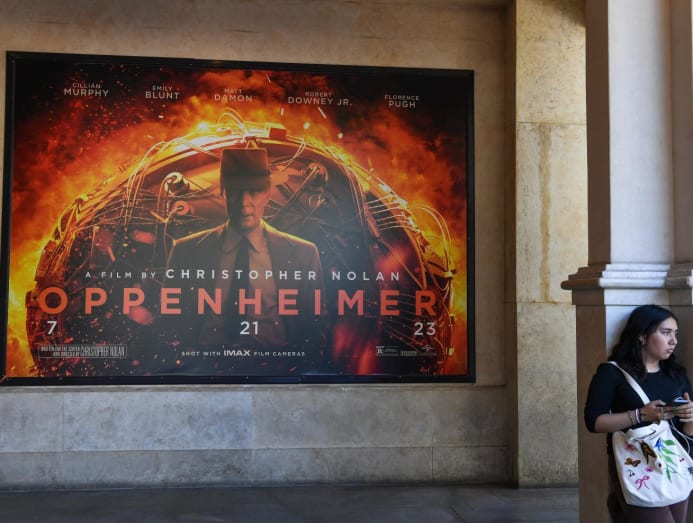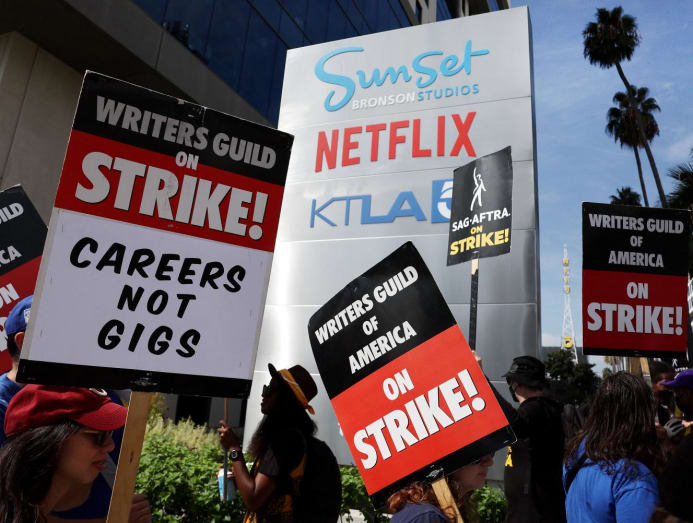Commentary: Oppenheimer is finally getting a Japan release date — but why did it take so long?

Heads up, Oppenheimer enthusiasts — the movie’s finally received the green light for release in Japan next year.
After months of controversy in Japan over Christopher Nolan’s biopic on the so-called father of the atomic bomb, J. Robert Oppenheimer, the decision to release the film through a local indie player rather than a major distributor suggests a cautious move to test local audiences' receptiveness following the drawn-out furore.
But why was it withheld from screening in the first place?
OPPENHEIMER’S JOURNEY TO JAPANESE SCREENS
Films are a great cross-cultural platform due to their ability to reach across international borders to audiences of various ethnicities and backgrounds. However, while geographical barriers are much more easily transcended today than in the past, intangible barriers of culture and history are not always so.
Upon its initial US release in July, Oppenheimer faced heavy criticism for neglecting to depict neither Japanese perspectives nor the destructive impact of the atomic bombs dropped on Hiroshima and Nagasaki during World War II on Japanese victims.
The bombings, which resulted in an estimated 200,000 deaths, are considered to have played a major role in Japan's surrender.
In response, Nolan highlighted his choice to place intentional focus on J. Robert’s perspective, reminding critics that his work was not meant to be a documentary.
It’s not just Japan, either: Upon its release, Oppenheimer had also sparked widespread backlash in India for its use of religious Hindu elements in a R-rated scene.
Nevertheless, this failed to prevent the movie from screening there, highlighting the remarkable intensity of criticism and controversy in Japan that led to a halt on the film’s distribution.

Criticism ramped up amid the film's promotion alongside fellow tentpole release Barbie, leading to an online cultural phenomenon known as #Barbenheimer (a portmanteau of the film titles).
Warner Bros, the studio behind Barbie, in July endorsed social media memes that combined images of Barbie and a mushroom cloud, leading Japanese netizens to call for a boycott of both films under the hashtag #NoBarbenheimer.
In this day and age, where so much of outreach is done online, a movie's success is no longer determined primarily by its content nor featured cast. Even its marketing and promotional efforts must take care to consider the cultural nuances and sensitivities of international audiences.
Warner Bros later apologised for "insensitive social media engagement”— but the damage was done. Upon releasing in Japan two weeks later, the film struggled to gain traction among locals and was largely regarded as a box office failure in the country.
REPRESENTATION REQUIRES BEING PRESENT
In the case of Oppenheimer, what could have further prevented the fallout?
Firstly, the controversy around the film highlights a broader need for countries like Japan and the United States to engage in meaningful discourse on their relationships with nuclear weapons, especially against a backdrop of intensifying geopolitical uncertainties.
In its Japan release announcement, distributor Bitters End chose not to mention the initial upset, saying only that it was aware that the film’s subject matter had a very important and special meaning for locals.
The divide in public opinions and reactions to the Oppenheimer controversy underscores the need for Japan to relook its historical reticence in discussing the rights and wrongs of the bombings, especially as it contemplates a historic shift in defence spending.
Japan, which remains the only country to have endured the devastating impacts of nuclear weapons, faces a unique responsibility in shaping global discussions about disarmament, non-proliferation, and the role of nuclear capabilities in its defence policy.
Secondly, despite Oppenheimer’s compelling storytelling and alluring visuals, technical excellence is no longer the be-all and end-all of the measure — and it’s long past time for Hollywood to wise up.
The annual UCLA Hollywood Diversity Report found that in 2022’s theatrical release roster, people of colour represented only 17 per cent of directors and 12 per cent of writers.
While women have made strides, composing 27 per cent of writers in 2022, up from 17 per cent in 2019, only one woman of colour was credited as a writer for a top theatrical film in 2022.
The Writers Guild of America’s strike — which launched in May and lasted a historic 148 days — also brought to light the struggles faced by minority writers, adding urgency to calls for an industry-wide shift towards greater equity.

But there is growing concern that key Hollywood players are reneging on diversity and inclusion efforts as their attention turns to cost-cutting. Over the summer, a slew of high-profile Black female executives, all working in roles focused on driving diversity and inclusion, were let go from their positions at top companies such as Warner Bros and Disney.
Watchers cautioned that such departures signal widespread backtracking on earlier promises, noting that diverse shows and projects have also been increasingly shelved or dropped.
This current upheaval raises further questions about Hollywood's sincerity in fostering genuine change. After all, if there is a lack of diversity among creators tasked with shaping the narrative, the films that emerge will inevitably reflect this.
REWRITING THE SCRIPT
Different groups have different experiences and relationships with key topics from festive holidays to war. Tackling stories tethered to sensitive cultural or historical themes or events doesn’t just take artistic or creative finesse — it requires deliberate and direct engagement with the communities in question.
One method would be to consult with cultural advisers, who can provide accurate and nuanced insights into specific intricacies and behaviours. Engaging individuals from the represented communities during development and production is crucial for the identification of potential blind spots.
For instance, in the making of current Oscar frontrunner Killers of the Flower Moon, director Martin Scorsese and his team took care to invest in extensive, diligent research of the Native tribe at the centre of the crime thriller — but they also collaborated with tribal representatives to understand Osage traditions, and engaged Osage art consultant Julie O’Keefe to bring the era to life.
Diversity and inclusion should not be a mere statistical checkbox, either — it should demand adequate attention and resources to involve and include voices from a variety of backgrounds and cultures.
Take the Netflix Created By Initiative for example, through which the streaming giant is offering script development deals to 14 mid-level film and series writers identified via collaboration with leading organisations dedicated to promoting access for underrepresented creatives.
Such efforts can result in big pay-offs: Everything Everywhere All at Once, for example, broke away from historical Asian stereotypes to offer an authentic portrayal of a Cantonese-speaking immigrant family that resonated with audiences far and wide.
This groundbreaking work, which went on to clinch Best Picture at this year’s Academy Awards, notably featured Asian talent both on screen and off, including co-writer-director Daniel Kwan and producer Jonathan Wang.
Hollywood’s talent pool is more diverse than it’s ever been — however, there is still more to be done.
For those working not only to create media but also distribute it, it’s time to shift the focus of the lens to centre open dialogue, offer respect to cultural differences, and extend empathy to all viewers.
ABOUT THE AUTHOR:
Nicole Chan is a communications strategist by trade, and a digital native by passion. Driven by areas where passion meets purpose, she is keen on creating unique narratives for brands and igniting conversations for topics close to her heart such as intersectionality, DE&I, and sustainability.








